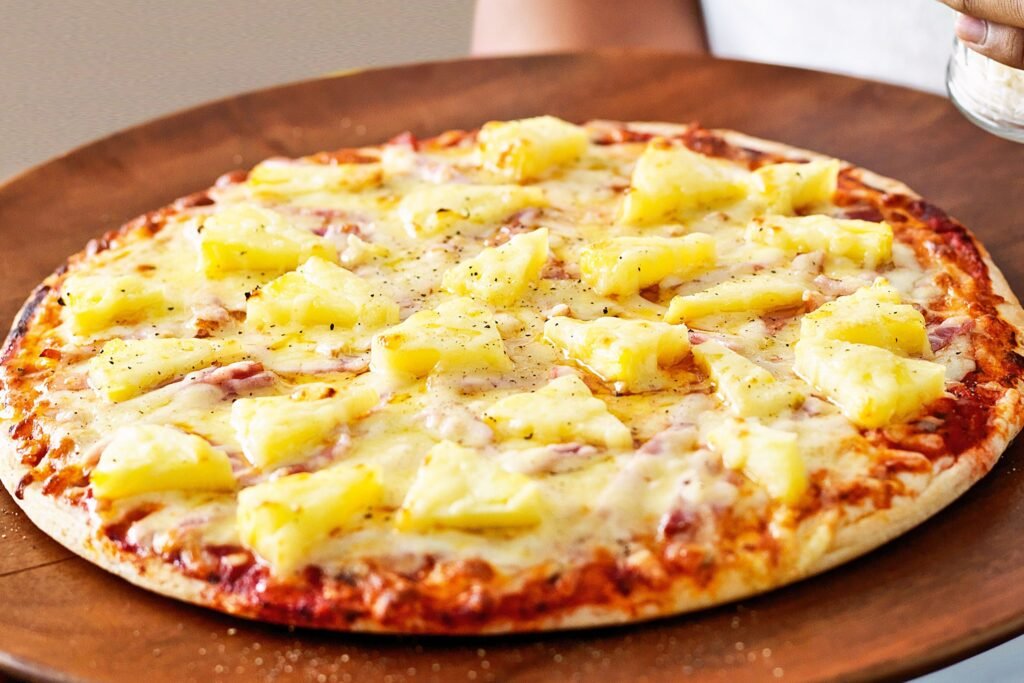Inspired by content originally published on SBS News by Tom Livingstone
Introduction
In a world where pineapple on pizza can ignite debates around dinner tables, one Australian pizzeria has taken the controversy—and the concept to dizzying new heights. That’s Amore, a Melbourne-based pizza shop, recently made headlines for selling a $190 Hawaiian pizza, a bold creation designed to push boundaries, elevate ingredients, and start conversations.
But is this just a PR stunt, or does it signal a broader shift in how pizza is valued, marketed, and consumed?
For pizza enthusiasts, suppliers, and shop owners, this isn’t just a story about a pricey pie—it’s a masterclass in branding, ingredient sourcing, and tapping into the luxury food market.
The Ingredients Behind the Price Tag
Let’s be clear: this isn’t your average ham-and-pineapple pizza. The “Royale with Cheese” Hawaiian pizza is built with:
- Fresh Queensland pineapple
- Free-range Bangalow sweet pork
- Hand-stretched 72-hour fermented dough
- Fio di latte mozzarella
- 18-month aged prosciutto
- A drizzle of truffle-infused honey
- Gold leaf garnish
This carefully curated lineup transforms what’s often considered a casual, even divisive topping combo into a luxury culinary experience.
🍍 Pizza Pro Tip for Enthusiasts:
Want to bring a slice of this indulgence home? Start with Caputo 00 flour for long-fermented dough, use truffle-infused honey for a gourmet twist, and upgrade your pineapple with organic canned slices in juice. Pair it with a steel pizza stone for that pro-level char at home.
Redefining Value in Pizza
Traditionally, pizza has been the everyman’s meal—accessible, affordable, and endlessly adaptable. But in recent years, we’ve seen a new category emerge: “elevated fast casual.”
From New York to Tokyo, premium pizza experiences are redefining what diners are willing to pay for when it comes to crust, toppings, and ambiance. Think:
- $50 white truffle pies
- Caviar-topped slices
- Tableside burrata service
The $190 pizza from That’s Amore fits neatly into this movement—and offers a model for shop owners looking to diversify menus and boost margins.
For Shop Owners: How to Introduce a High-End Menu Item
You don’t need gold leaf to craft a high-ticket offering. But you do need intention.
Here are a few strategic steps to create your own premium pizza:
- Curate exclusive ingredients – Look into sourcing items like 24-month-aged Parmigiano Reggiano or regional olive oils.
- Tell the story – Why these ingredients? Who makes them? Include sourcing notes on your menu and social posts.
- Limit the run – Make your premium pie a limited edition to create urgency.
- Market it like luxury – Use styled photography, custom pizza boxes, and even branded merchandise to reinforce the experience.
🧠 Business Insight:
Premium pricing isn’t about cost—it’s about perceived value. The way you present, position, and narrate your product is just as important as the product itself.
Supplier Takeaway: The Rise of Gourmet Ingredients
For suppliers, this shift creates demand for artisanal, sustainable, and rare ingredients. Pizza is no longer a space limited to commodity mozzarella and canned tomatoes. There’s growing interest in:
- Organic, wood-fired-ready flours
- Heirloom tomato sauces
- Ethical meat products
- Imported cured meats and cheeses
This is a prime time for bulk suppliers and food distributors to create premium ingredient kits for pizza shops looking to enter the gourmet lane. Consider bundling prosciutto, truffle oil, and buffalo mozzarella into easy-to-order offerings.
From Controversy to Cult Following
There’s also something clever—and intentional—about choosing Hawaiian as the pizza to elevate. Pineapple on pizza remains one of the most divisive culinary conversations online. By dressing it up in gold and truffle, That’s Amore leaned into the tension and created a social media magnet.
📈 Marketing Angle for Shop Owners:
Pick a polarizing flavor (anchovy? ranch drizzle? vegan cheese?) and elevate it. Position your premium version as the definitive answer to the debate—and let your customers (and TikTokers) decide.
Final Slice
The $190 Hawaiian pizza isn’t just a flex—it’s a signal. Pizza, perhaps more than any other dish, is elastic. It can be street food or fine dining. It can be mass-produced or masterfully handcrafted. And when done right, it can command a price tag once reserved for steaks and sushi.
For anyone in the pizza business, the message is clear: Don’t underestimate the appetite for premium experiences. Whether you’re upgrading your toppings, rethinking your brand story, or testing new pricing models, the opportunity is there waiting to be sliced.
Affiliate Disclosure: This article contains affiliate links, which means Pizza Magazine may earn a commission if you purchase products through them. We only recommend products and services that align with our editorial values and serve the needs of our pizza-loving community.
